Papers by Corneliu Dragomirescu
Le théâtre médiéval au cinéma : référence, métaphore, métamorphose
Le Moyen Âge en jeu, 2010
Depuis l’avènement du cinéma, ce qu’on appelle communément « le grand public » a vu, connu et app... more Depuis l’avènement du cinéma, ce qu’on appelle communément « le grand public » a vu, connu et apprécié le Moyen Âge à travers ce médium qui se plaît à récupérer et réinvestir les imaginaires d’autres époques. Le « cinéma médiéval », terme de complaisance ambigu, renferme en réalité plusieurs applications possibles ; cependant on se référera ici à son premier niveau de sens, celui des films dont l’action se place au Moyen Âge. En représentant cette période, les scénaristes et les réalisateurs ..
Itinéraires, 2010
By focusing upon the choices of the ilmmakers and the process of creation that demands the invent... more By focusing upon the choices of the ilmmakers and the process of creation that demands the invention of facts (even « historical » ones), the article explores three ways of interpreting « medieval cinema ». 1. Films actually set in the historical Middle Ages, either for aesthetic and dramatic reasons, or following ideological or economic motivations. 2. The form of cinema appearing in a story set in the Middle Ages, with an audience looking upon projected images (visions of the past, parallel actions). 3. When medieval aesthetics penetrate the language of ilm (visual, narrative), indifferent of the period depicted.
Toward a Typology of Medieval Theatrical Images
The images associated with medieval drama, and in particular those of mystery play manuscripts, a... more The images associated with medieval drama, and in particular those of mystery play manuscripts, allow us to raise questions about a theatrical iconography in the Middle Ages. As the images most often refer to the story itself and not to past performances, it seems more accurate to speak of images related to theater than of theater images. By expanding the corpus we distinguish three categories : images related to a performance, images linked to a text and images depicting an idealized vision of theater from the medieval man’s perspective. These images have intertextual and intervisual connections with other series of images, with which they are linked thematically, as well as with the shows themselves, thus enriching the act of reception for the reader/viewer.

Gestures as Performance Markers in French Illuminated Mystery Play Manuscripts: The Case of the Vengeance Nostre Seigneur in MS Arras, Bibl. Mun. 697
Viator, 2010
Illuminated play manuscripts present features relating them indirectly to the theatrical experien... more Illuminated play manuscripts present features relating them indirectly to the theatrical experience and informing the various reading practices. Among the elements of the page –miniatures, dialogue, rubrics – performance markers circulate between the linguistic and iconographical levels; gestures are here an invaluable factor suggesting bodily presence. They construct an effet de jeu by stimulating the reader to imagine performance. In MS Arras 697 the miniatures have been created separately and pasted later into the manuscript. Similar gestures are juxtaposed to various scenes, and the reader is determined to adapt them in the reception process in order to fit them into the stream of action. The mechanism could be described as a text-image montage, with different elements put together creating another, fuller meaning than the elements taken apart. Gestures thus work as a crystallizer of the reader’s recollections and imagination, charging them with all the power of text, image and performance united.
Museikon, 2020
Intervista a tre voci ad Alberto Fasulo, regista del film "Menocchio" (2018), opera ispirata alla... more Intervista a tre voci ad Alberto Fasulo, regista del film "Menocchio" (2018), opera ispirata alla vicenda del mugnaio friulano Domenico Scandella, che nel tardo Cinquecento fu sottoposto ad Inquisizione e a condanna.
Religions & Histoire N° 51 , 2013
En parallèle des arts plastiques, le Moyen Âge introduit une nouvelle manière de représenter le C... more En parallèle des arts plastiques, le Moyen Âge introduit une nouvelle manière de représenter le Christ, de l'incarner au sens strict : la mise en scène théâtrale des épisodes des Évangiles. Ce théâtre lié au sacré a plusieurs facettes selon qu'il est l'oeuvre de religieux ou de laïcs. Même s'il n'est pas aisé de le connaître, on peut établir une liste des divers types de jeux ou drames produits alors, dans lesquels coexistent le souci pastoral et l'intention spectaculaire.
Médiévalisme : modernité du Moyen Age, Itinéraires - Littérature, textes, cultures, 2010
By focusing upon the choices of the filmmakers and the process of creation that demands the inven... more By focusing upon the choices of the filmmakers and the process of creation that demands the invention of facts (even « historical » ones), the article explores three ways of interpreting « medieval cinema ». 1. Films actually set in the historical Middle Ages, either for aesthetic and dramatic reasons, or following ideological or economic motivations. 2. The form of cinema appearing in a story set in the Middle Ages, with an audience looking upon projected images (visions of the past, parallel actions). 3. When medieval aesthetics penetrate the language of film (visual, narrative), indifferent of the period depicted.
Le Moyen Âge en Jeu - Eidôlon, 2009
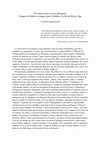
La performance des images, 2009
Les œuvres dramatiques médiévales participent à la création et la diffusion d’images censées réaf... more Les œuvres dramatiques médiévales participent à la création et la diffusion d’images censées réaffirmer la foi et faire œuvre de dévotion. Même si elles sont structurées par la parole, ces pièces trouvent leur impact majeur à travers les images qu’elles créent, dans un réseau d’échanges intertextuels et intervisuels avec d’autres supports. Mais à la fin du Moyen Age le théâtre devient de plus en plus lié au livre ; on produit ainsi des manuscrits de luxe destinés uniquement à la lecture. A certains d’entre eux on choisit d’ajouter des images qui complémentent le dialogue, enrichissant ainsi la réception à travers la lecture, qui devient performative. L’image « de théâtre » naît dans l’imagination du dramaturge et meurt une première fois quand elle est couchée sur papier. Elle renaît dans le jeu des acteurs et meurt une deuxième fois dans la création du manuscrit. La troisième naissance aura lieu seulement dans l’acte de la réception, dans l’imaginaire du lecteur. La performance des images, qui réside dans leur mode d’agir dans le manuscrit enluminé, se double ainsi du pouvoir de la performance dramatique, permettant la transformation et la reconnaissance des formes à travers les média.
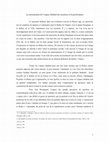
Studia Patzinaka, 2007
Le spectacle théâtral, dans son évolution à travers le Moyen Age, se caractérise par un complexe ... more Le spectacle théâtral, dans son évolution à travers le Moyen Age, se caractérise par un complexe de ruptures et continuités entre le théâtre de l'Eglise, avec le drame liturgique, et le théâtre de la Ville, notamment avec les mystères. Il y a rupture, car l'un n'est pas le développement direct de l'autre, et il serait peut-être apparu sans lui. Mais il y a aussi continuité, car les expériences et les innovations des spectacles de drame liturgiques trouvent leur place dans la « mise en scène » des mystères. Cela doit être mis en rapport avec le désir d'appropriation d'un rite, ici le théâtre, par un autre groupe social, la bourgeoisie, qui crée sa propre forme d'expression en réponse au théâtre des moines. On retrouve ici des enjeux du pouvoir de l'image par laquelle on cherche à faire valoir la puissance sociale. Cela renvoie à l'image de soi que chaque sujet crée à travers ces formes de représentation, et à l'image du monde que la société veut créer à un moment donné. Cette toile des ressorts socioculturels une fois fixée, on pourra en ce qui suit se pencher plus attentivement sur un élément définiteur du théâtre, l'espace.
Médialité de la procession : Performance du mouvement rituel en textes et en images à l’époque pré-moderne, 2011
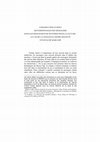
Vers une poétique du discours dramatique au Moyen Age, 2011
Faisant miroir à l’importance de leur activité dans la société médiévale, les messagers sont souv... more Faisant miroir à l’importance de leur activité dans la société médiévale, les messagers sont souvent présents dans le théâtre des mystères. Les manuscrits de luxe destinés à la lecture qui renferment ces pièces les représentent parfois doublement : par le dialogue qui leur est assigné et par l’image qui l’accompagne. Du point de vue iconographique ces images suivent à première vue les schémas traditionnels de représentation des messagers ; leur importance se révèle dans les variations introduites, ou encore dans le point d’insertion dans le texte. Du point de vue rhétorique la construction de ces personnages est variée : elle tient de la fonction générale de ce métier de transmission de l’information dans une société fortement hiérarchisée, mais aussi, pour ce qui est propre au théâtre médiéval, à relier les scènes qui se passent dans les divers loci ou mansions qui composent la scène simultanée, afin d’assurer la cohérence de ce monde qui se donne à voir aux spectateurs. Cette communication voudrait étudier le mode de représentation des personnages de messagers, par l’image et la parole, mais aussi leur fonction dans la structure et le fonctionnement du texte théâtral, à partir d’un cas précis, le mystère de la Vengeance Nostre Seigneur d’Eustache Marcadet. L’attention sera accordée aux variations iconographiques, aux schémas rhétoriques de la parole des messagers, à la mise en scène des actes et documents qu’ils transmettent, et à leur importance dans l’économie de la pièce.
Efficacité/Efficacy How To Do Things With Words and Images?, 2011
Les manuscrits enluminés des mystères médiévaux contiennent des éléments aidant à la transmission... more Les manuscrits enluminés des mystères médiévaux contiennent des éléments aidant à la transmission du théâtre par la lecture. Le manuscrit 697 de la Passion et Vengeance Jhesucrist (XVe s.) est exemplaire : à travers ses images il offre aux lecteurs-spectateurs des scènes inédites ou des éléments complémentaires au dialogue ; les rubriques des images servent de point d’articulation et orientent le sens de d’interprétation. Ces « nœuds performatifs » aident à restituer la dimension spectaculaire du jeu théâtral, à travers une lecture performative. L’ensemble pourrait être décrit comme un montage texte-image, agissant de manière efficace sur l’imagination du lecteur.
Notre-Dame de L'Epine 1406-2006. Actes du colloque international, 2ème partie, Etudes Marnaises, 2008
Ecole des hautes études en sciences sociales, Paris Université nationale d'art théâtrale et ciném... more Ecole des hautes études en sciences sociales, Paris Université nationale d'art théâtrale et cinématographique I. L. Caragiale, Bucarest Si la basilique de l'Épine est un noeud de contradictions et de mystères, le petit édicule qu'elle abrite, traditionnellement appelé « trésor », et plus récemment « tabernaclereliquaire », l'est au mois autant, reflétant bien les questions soulevées par l'ensemble de l'édifice. Et il l'est même en telle mesure qu'on pourrait presque réécrire l'histoire de l'église à partir de lui. Ce ne sera pas le cas ici, dans l'espace de cet article. On va en revanche essayer de rediscuter certaines hypothèses et idées sur le monument, et esquisser aussi quelques nouvelles pistes possibles.
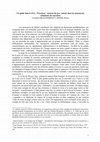
European Medieval Drama, Jan 1, 2008
A Guide in the Book: Prescheur/meneur du jeu/author in Mysteries Illuminated Manuscripts
In my... more A Guide in the Book: Prescheur/meneur du jeu/author in Mysteries Illuminated Manuscripts
In mysteries illuminated manuscripts, text and image combine to recreate a spectacle on the book page, like an equivalent of the theatrical performance. If the play itself is introduced by the Prescheur and guided by the meneur du jeu, we shall try to see what parallels their presence in the manuscripts. Beyond the transcription of the prologues and epilogues, the book page contains other marks, both visual and linguistic, that construct the presence of the prescheur/meneur du jeu/author. In the images, there is the character that preaches before an audience, thus linking the prologue and the dialogue scenes, in the transition from reality to play. But in the paratextual information also, such as didascalia and image rubrics, this figure is active through performative formulae (Cy est, et dist, etc.). This diffuse presence binds together the « épaisseur de signes », allowing communication between the different elements. It also highlights the problematic of theatrical illuminated manuscripts, in connection with the idea of a non-illusionist theatre, as its role is to guide and to complete the demonstration, thus creating a distancing effect but also a bond with the audience. Its purpose is to lead the reader, like the spectator of the play; by this it enables the transition from oral performance to performative reading.
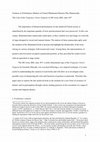
Viator, 2010
Illuminated play manuscripts present features relating them indirectly to the theatrical experien... more Illuminated play manuscripts present features relating them indirectly to the theatrical experience and informing the various reading practices. Among the elements of the page –miniatures, dialogue, rubrics – performance markers circulate between the linguistic and iconographical levels; gestures are here an invaluable factor suggesting bodily presence. They construct an effet de jeu by stimulating the reader to imagine performance. In MS Arras 697 the miniatures have been created separately and pasted later into the manuscript. Similar gestures are juxtaposed to various scenes, and the reader is determined to adapt them in the reception process in order to fit them into the stream of action. The mechanism could be described as a text-image montage, with different elements put together creating another, fuller meaning than the elements taken apart. Gestures thus work as a crystallizer of the reader’s recollections and imagination, charging them with all the power of text, image and performance united.
Théâtres du Moyen Age : Textes, images et performances - Médiévales, 2010
The images associated with medieval drama, and in particular those of mystery play manuscripts, a... more The images associated with medieval drama, and in particular those of mystery play manuscripts, allow us to raise questions about a theatrical iconography in the Middle Ages. As the images most often refer to the story itself and not to past performances, it seems more accurate to speak of images related to theater than of theater images. By expanding the corpus we distinguish three categories: images related to a performance, images linked to a text and images depicting an idealized vision of theater from the medieval man’s perspective. These images have intertextual and intervisual connections with other series of images, with which they are linked thematically, as well as with the shows themselves, thus enriching the act of reception for the reader/viewer.
Book Reviews by Corneliu Dragomirescu
Cahiers de recherches médiévales, 2007
Talks by Corneliu Dragomirescu
L'Individu Face à L'Expérience Théâtrale à La Fin Du Moyen Âge
Dans une société qui n'attribue pas au théâtre un lieu fixe de manifestation, contrairem... more Dans une société qui n'attribue pas au théâtre un lieu fixe de manifestation, contrairement à d'autres époques, au Moyen Age celui-ci a tendance à occuper temporairement une variété d'espaces, et en même temps à infiltrer des activités humaines diverses, à travers des ...
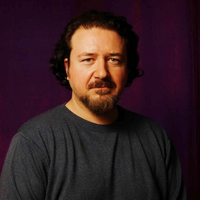

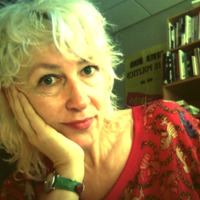
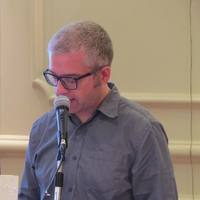

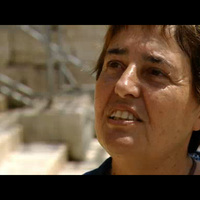




Uploads
Papers by Corneliu Dragomirescu
In mysteries illuminated manuscripts, text and image combine to recreate a spectacle on the book page, like an equivalent of the theatrical performance. If the play itself is introduced by the Prescheur and guided by the meneur du jeu, we shall try to see what parallels their presence in the manuscripts. Beyond the transcription of the prologues and epilogues, the book page contains other marks, both visual and linguistic, that construct the presence of the prescheur/meneur du jeu/author. In the images, there is the character that preaches before an audience, thus linking the prologue and the dialogue scenes, in the transition from reality to play. But in the paratextual information also, such as didascalia and image rubrics, this figure is active through performative formulae (Cy est, et dist, etc.). This diffuse presence binds together the « épaisseur de signes », allowing communication between the different elements. It also highlights the problematic of theatrical illuminated manuscripts, in connection with the idea of a non-illusionist theatre, as its role is to guide and to complete the demonstration, thus creating a distancing effect but also a bond with the audience. Its purpose is to lead the reader, like the spectator of the play; by this it enables the transition from oral performance to performative reading.
Book Reviews by Corneliu Dragomirescu
Talks by Corneliu Dragomirescu
In mysteries illuminated manuscripts, text and image combine to recreate a spectacle on the book page, like an equivalent of the theatrical performance. If the play itself is introduced by the Prescheur and guided by the meneur du jeu, we shall try to see what parallels their presence in the manuscripts. Beyond the transcription of the prologues and epilogues, the book page contains other marks, both visual and linguistic, that construct the presence of the prescheur/meneur du jeu/author. In the images, there is the character that preaches before an audience, thus linking the prologue and the dialogue scenes, in the transition from reality to play. But in the paratextual information also, such as didascalia and image rubrics, this figure is active through performative formulae (Cy est, et dist, etc.). This diffuse presence binds together the « épaisseur de signes », allowing communication between the different elements. It also highlights the problematic of theatrical illuminated manuscripts, in connection with the idea of a non-illusionist theatre, as its role is to guide and to complete the demonstration, thus creating a distancing effect but also a bond with the audience. Its purpose is to lead the reader, like the spectator of the play; by this it enables the transition from oral performance to performative reading.
In the 20th c., cinema used popular literary and legendary sources to create its own mythology. Villon quickly made his appearance into this fictional world, prompted by the literary and theatrical success of the character. He was all that cinema demanded: a sensitive man (a poet), a lover and an action hero, familiar with the mighty as well as with the poor, equally at home in palaces or in taverns. As films accumulated he became somewhat a stock character, his presence guaranteeing access to a certain type of stories, and in the meantime evoking History, a certain moment in space and time. It thus provided entertainment, and also a sense of seriousness and respectability, elements for which films longtime craved. Since cinema imposes its own kind of truth, few of the films featuring Villon as main character attempt to tell the “real” story of the poet; they are wise enough to imagine new situations, new adventures, following in the footsteps of the master himself.
This paper aims to explore the presence of Villon as character in cinema, seeking how this medium uses the popular figure and in what type of stories. In doing so, we remark how the medieval and post medieval approaches of the character found an ideal medium in the word of the movies. The polyvalence and longevity of the character that Villon created, modeling himself into a fictional hero, enable us to ask the question: was Villon writing for the cinema?